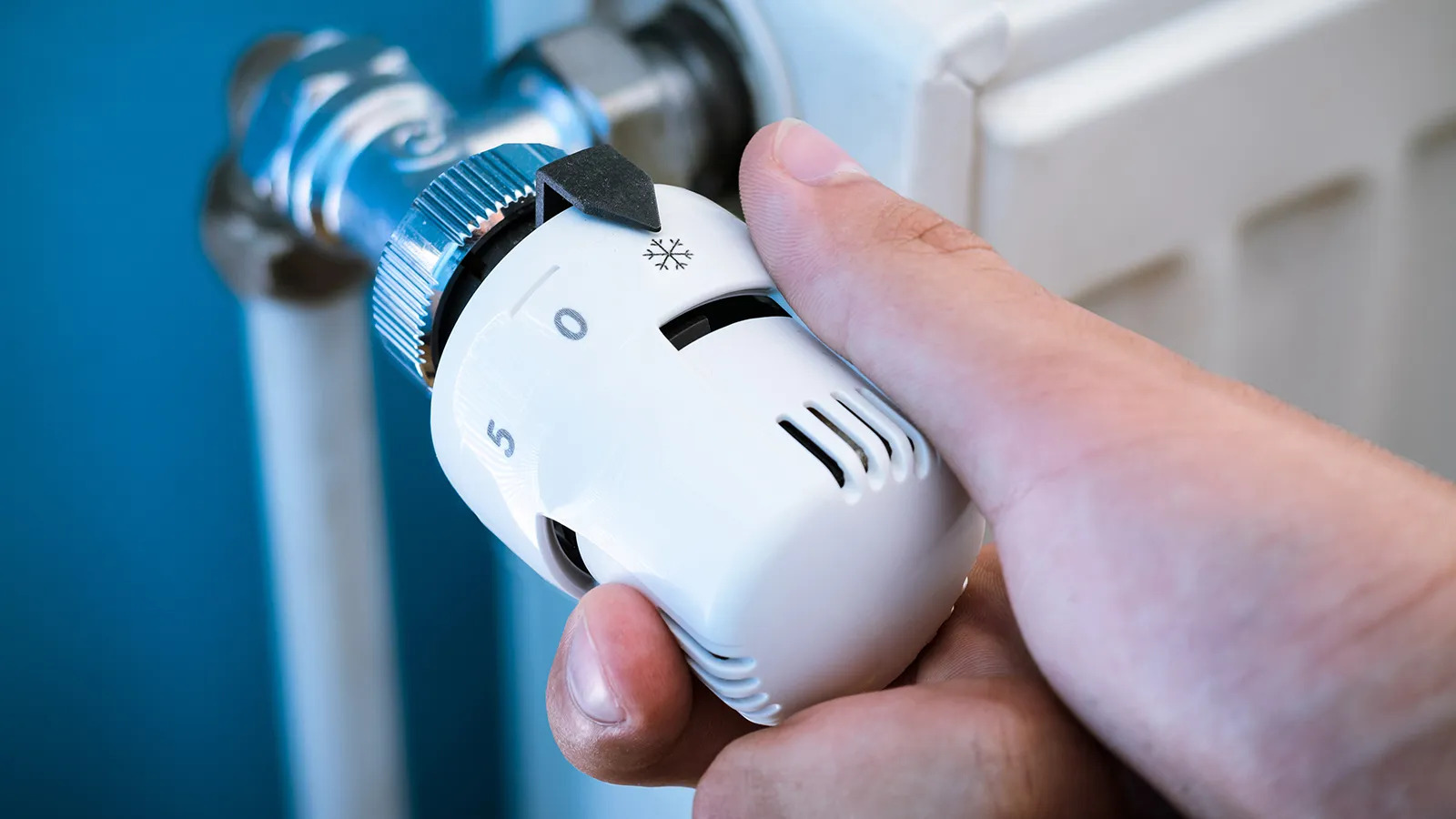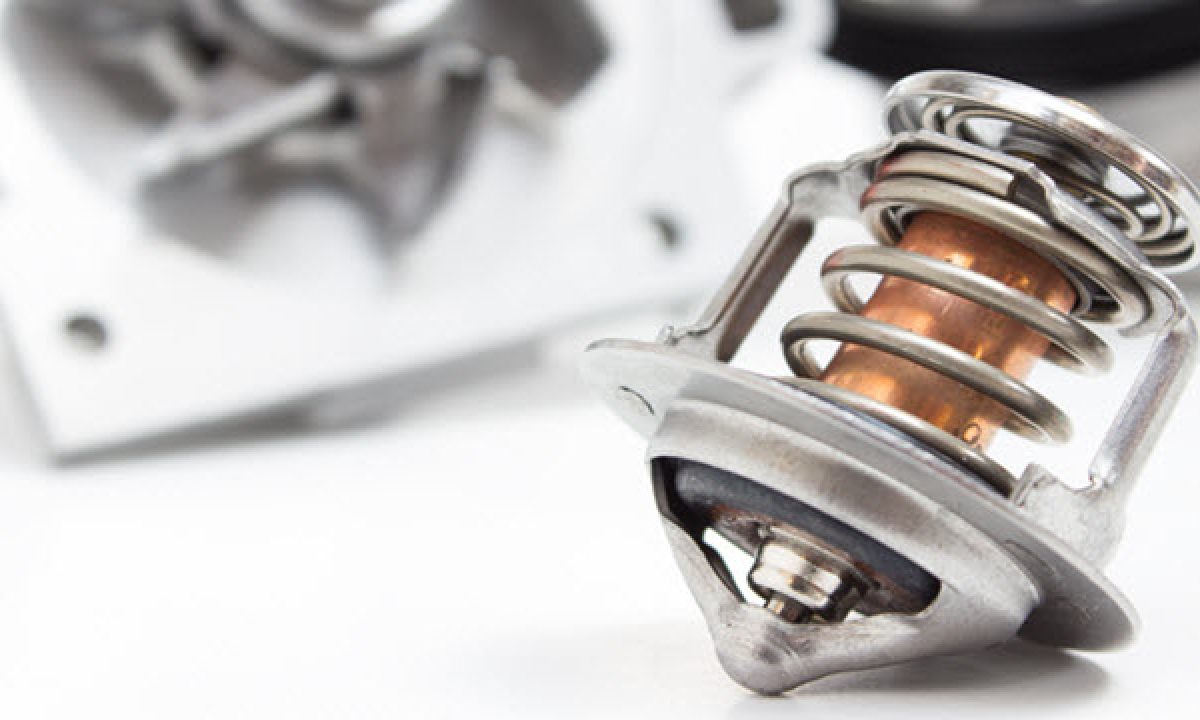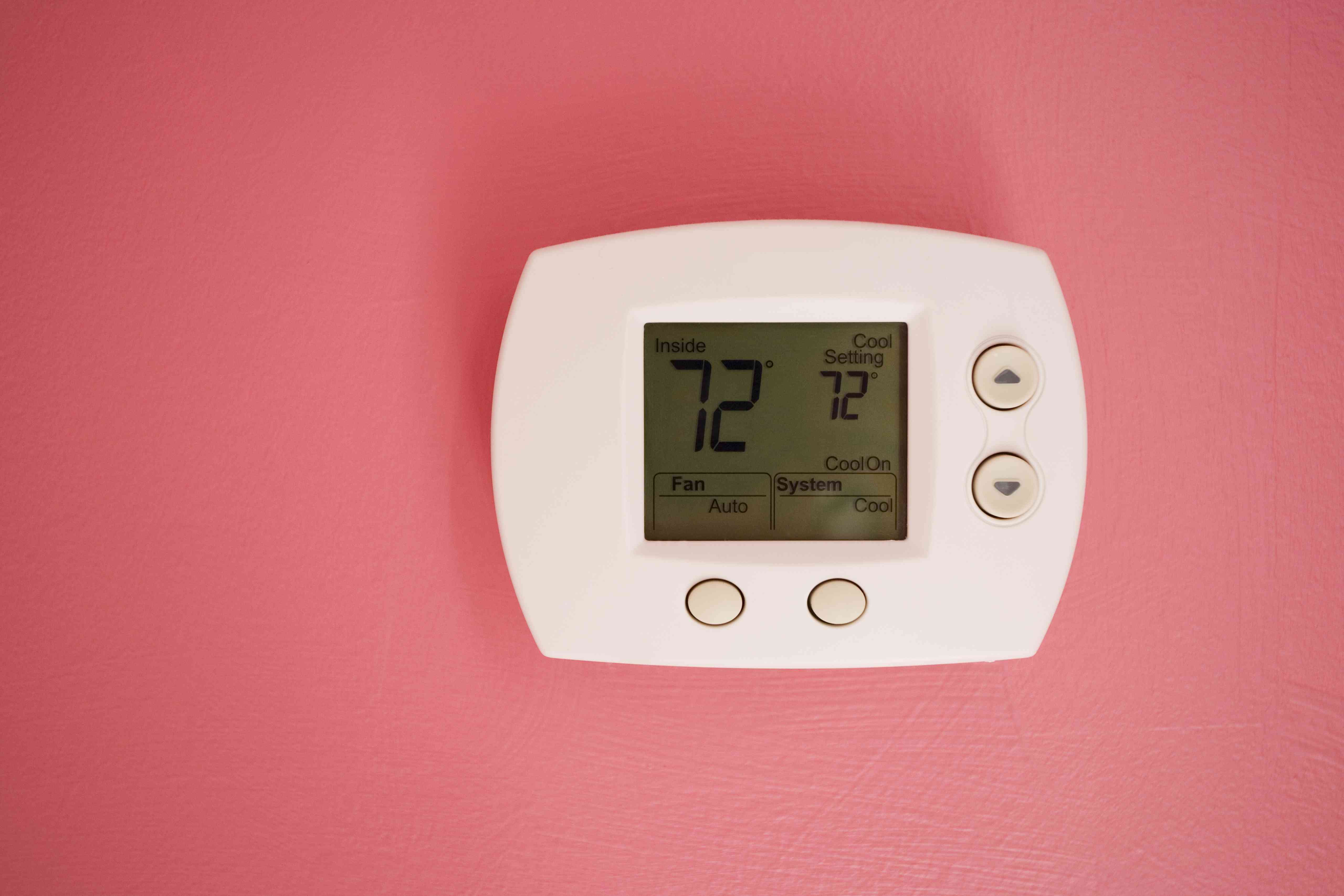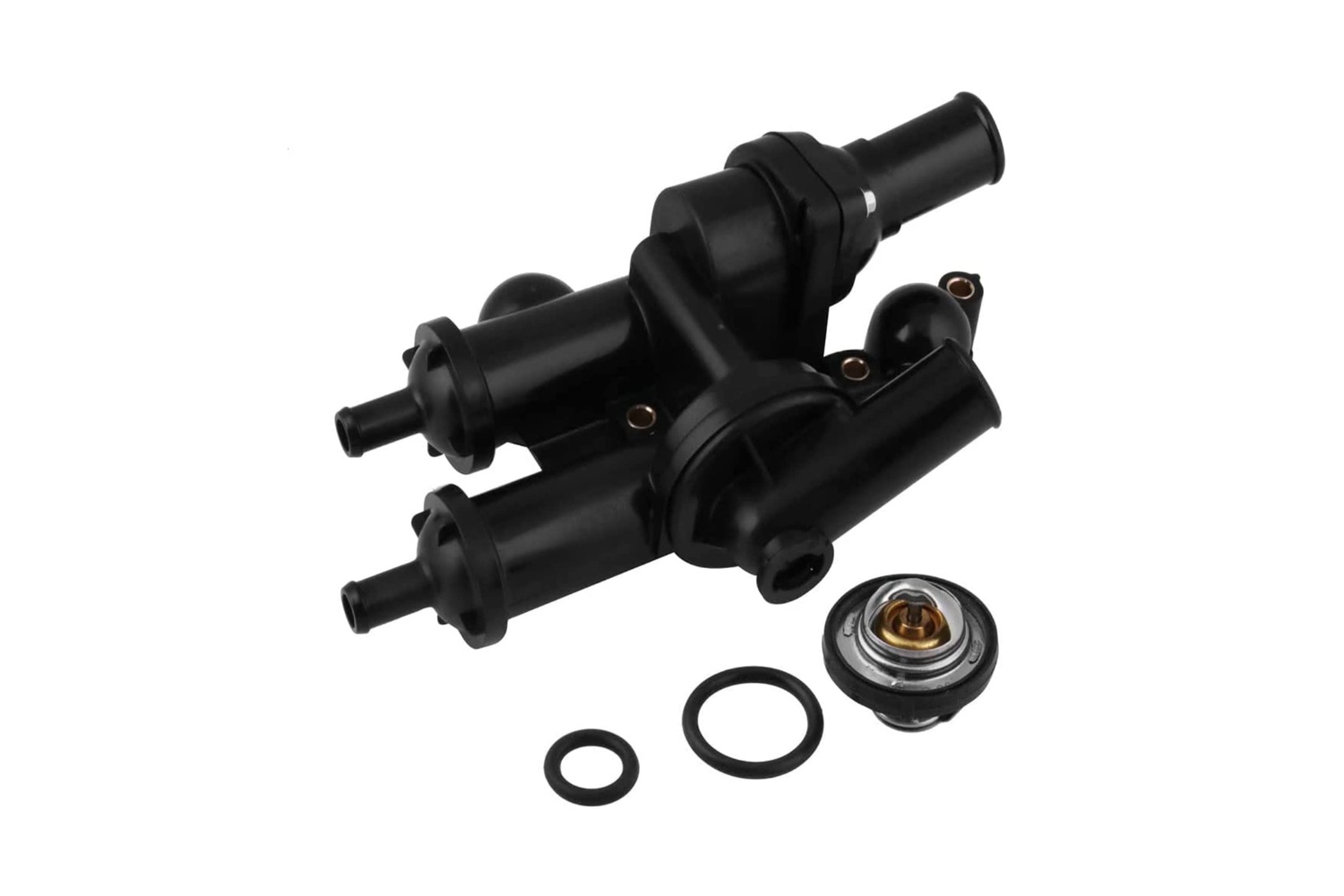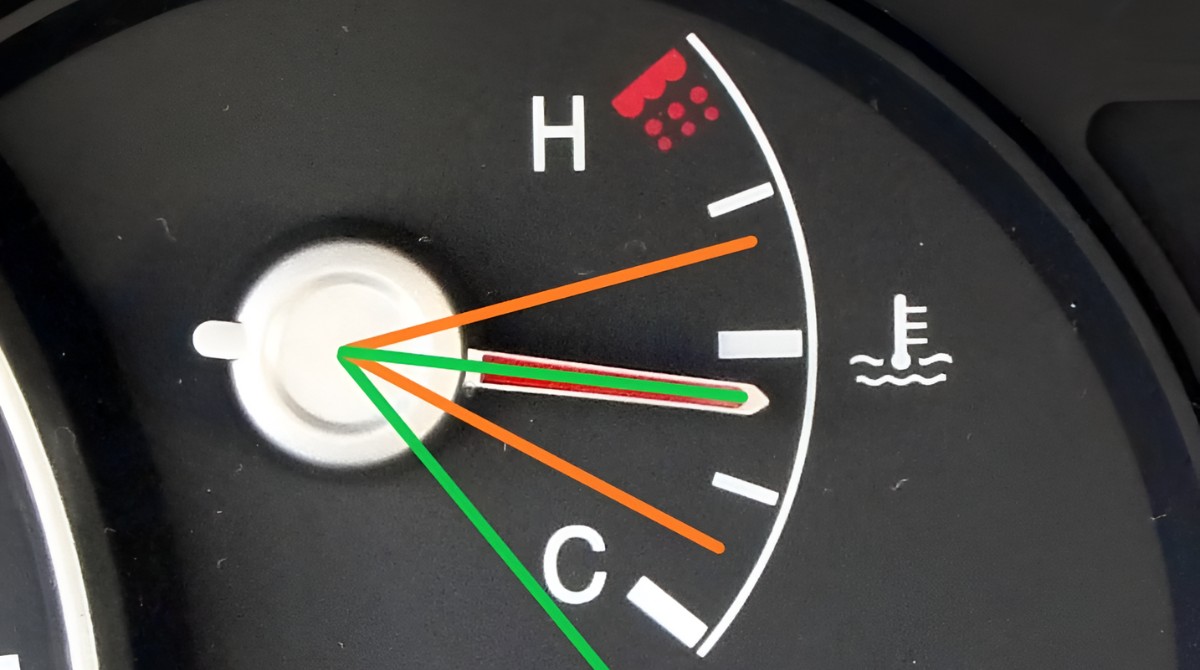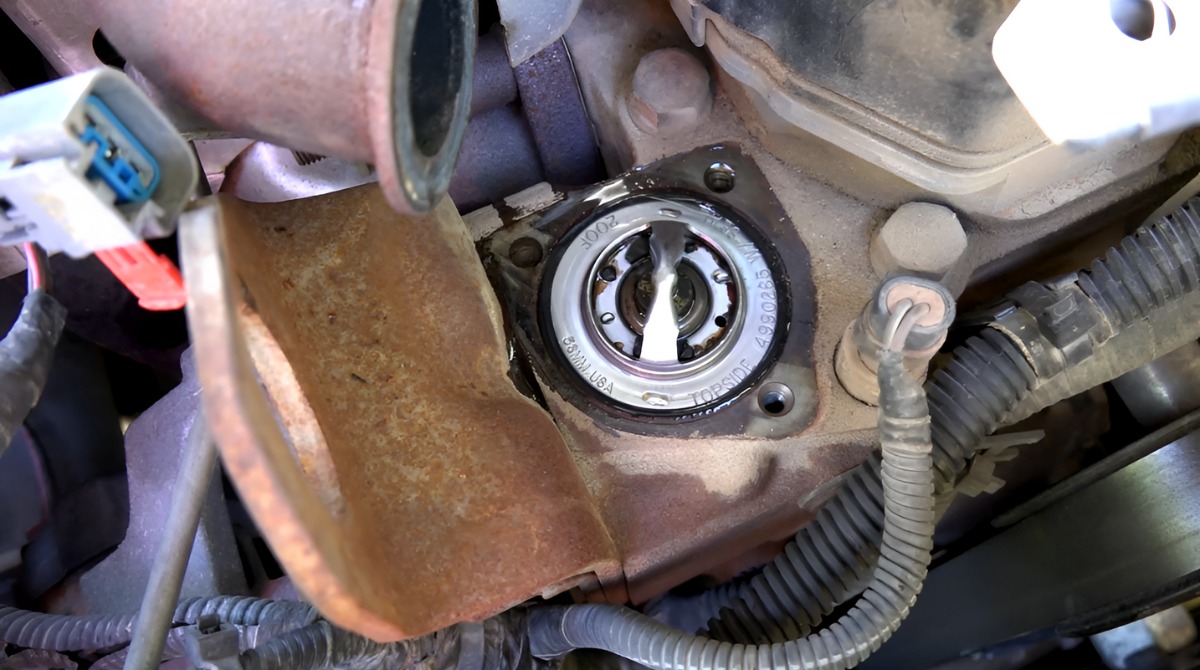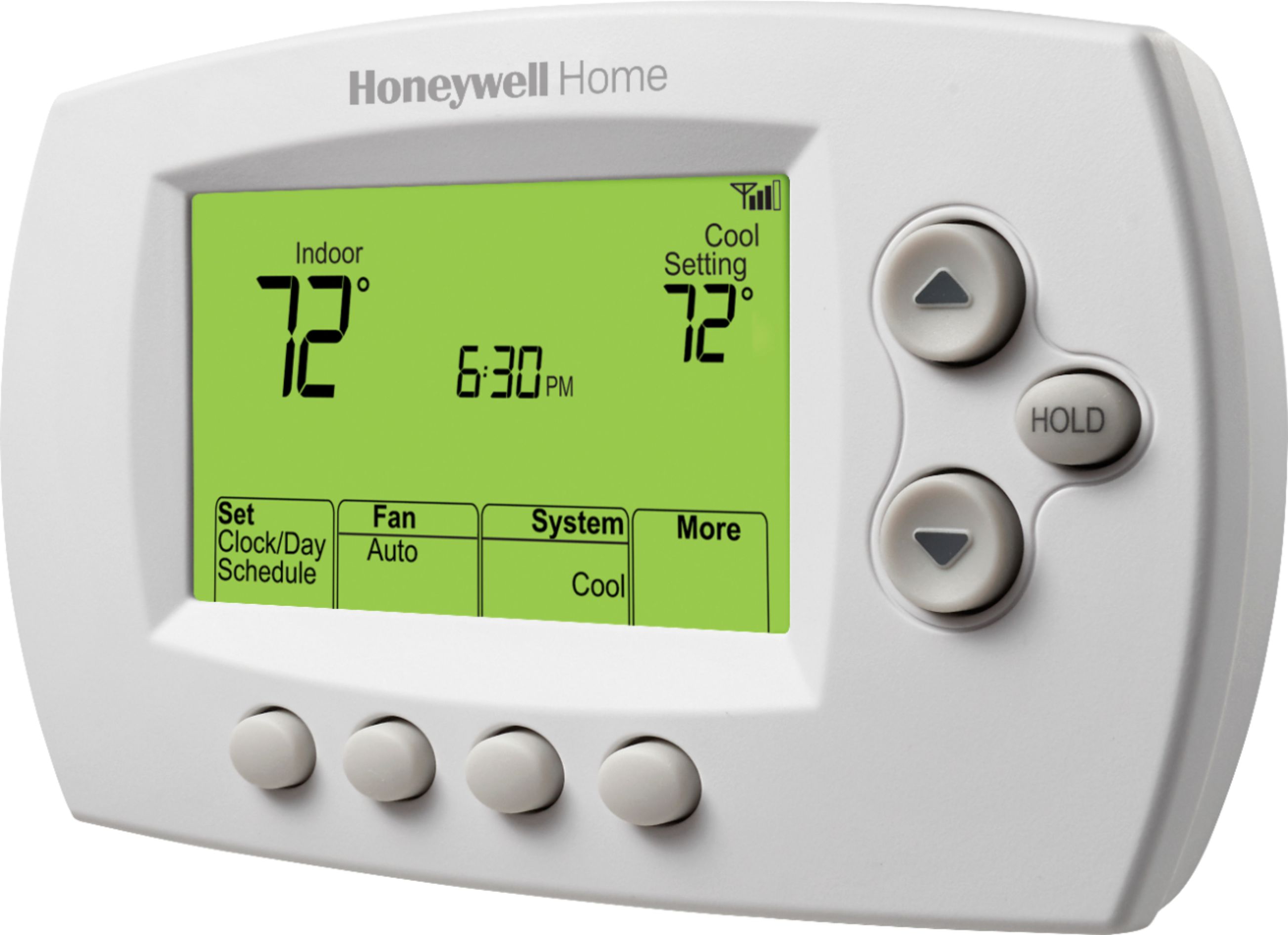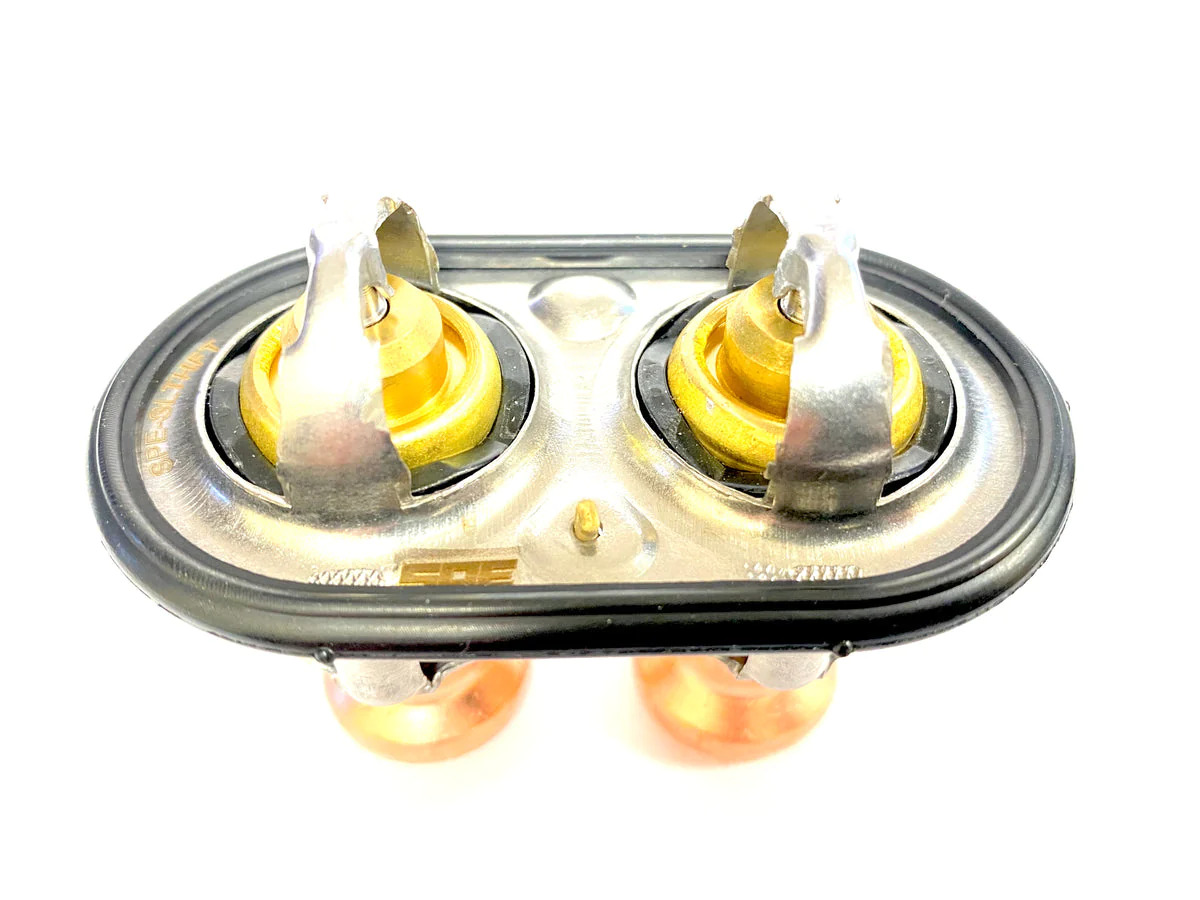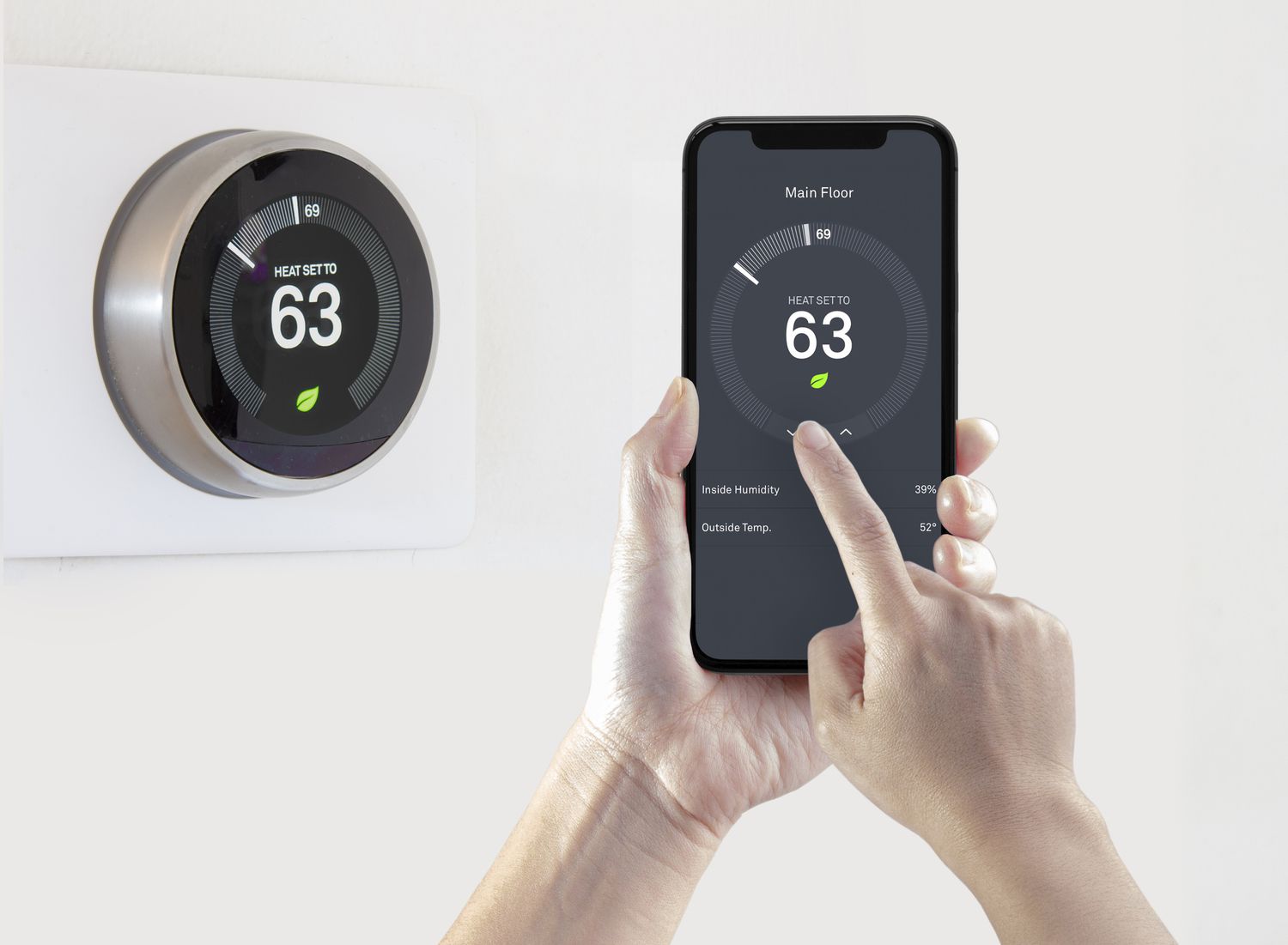Introduction
Welcome to this guide on how to use radiator thermostats! If you’re looking to improve the efficiency and comfort of your heating system, you’ve come to the right place. Radiator thermostats are a simple yet effective solution for controlling the temperature of individual radiators in your home. By allowing you to adjust the heat output of each radiator independently, they provide personalized comfort and energy savings.
In this article, we will explore the benefits of using radiator thermostats, the different types available, how to install and adjust them, programming tips, troubleshooting common issues, and maintenance tips.
With the help of radiator thermostats, you can ensure that each room in your home is heated to the desired temperature. This not only increases comfort but also helps reduce energy waste and lower your heating bills. Whether you’re a homeowner or a renter, radiator thermostats are a cost-effective and eco-friendly solution that can make a significant impact on your overall heating system efficiency.
So, if you’re ready to take control of your indoor climate and unleash the full potential of your heating system, let’s dive in and discover everything you need to know about radiator thermostats!
What is a Radiator Thermostat?
A radiator thermostat, also known as a thermostatic radiator valve (TRV), is a device used to control the temperature of individual radiators in a heating system. It is typically installed on the side of the radiator and works by regulating the flow of hot water into the radiator based on the desired temperature set by the user.
At its core, a radiator thermostat consists of a valve that can be manually adjusted or programmed to open or close, depending on the room temperature. When the room temperature falls below the set point, the valve opens, allowing hot water to flow into the radiator and heat the room. Once the set temperature is reached, the valve closes, reducing the heat output. This process helps maintain a consistent and comfortable temperature in the room.
Radiator thermostats provide a convenient way to individually control the temperature of each room in your home. This means you can have different temperatures in different rooms, depending on your personal preferences and usage. For example, you may want to keep the living room warm during the evening while keeping the bedroom cooler while you sleep.
By regulating the heat output of individual radiators, radiator thermostats help eliminate unnecessary heating and reduce energy waste. This can lead to significant energy savings and lower heating bills, especially when combined with a well-insulated home.
It’s important to note that a radiator thermostat is not a standalone heating system but rather a component of a central heating system. It works in conjunction with a boiler or a heat source to provide the required level of heating in each room.
Now that we understand what a radiator thermostat is and how it works, let’s explore the many benefits of using this innovative device.
Benefits of Using Radiator Thermostats
Using radiator thermostats in your home offers a wide range of benefits that can improve both your comfort and energy efficiency. Let’s explore some of the key advantages:
1. Personalized Comfort:
Radiator thermostats allow you to set and maintain different temperatures in each room, ensuring personalized comfort for everyone in your household. Whether you prefer a cozy bedroom or a cooler living room, radiator thermostats put you in control.
2. Energy Savings:
By regulating the heat output of individual radiators, radiator thermostats prevent unnecessary heating in rooms that aren’t in use, resulting in energy savings. This targeted heating approach can lead to significant reductions in your heating bills over time.
3. Increased Efficiency:
Radiator thermostats help improve the overall efficiency of your heating system by allowing you to fine-tune the heat output in each room. This means the boiler only needs to work as hard as necessary, reducing wear and tear and extending its lifespan.
4. Environmental Benefits:
Reducing energy consumption not only benefits your wallet but also has a positive impact on the environment. By using radiator thermostats, you can lower your carbon footprint and contribute to a sustainable future.
5. Quick and Easy Installation:
Installing radiator thermostats is a straightforward process that can be done by most homeowners. With a basic understanding of plumbing and a few tools, you’ll be able to upgrade your heating system in no time. Alternatively, you can hire a professional for seamless installation.
6. Compatibility with Most Systems:
Radiator thermostats are designed to be compatible with various central heating systems, including gas boilers, oil boilers, and heat pumps. This means you can enhance the efficiency of your existing system without the need for extensive modifications.
7. Smart Home Integration:
Many radiator thermostats offer smart features that enable integration with smart home systems. This allows you to control and monitor your heating remotely through smartphone apps or voice assistants, enhancing convenience and flexibility.
By utilizing radiator thermostats in your home, you can enjoy customized comfort, reduce energy consumption, lower heating costs, and contribute to a more sustainable planet. Now that we understand the benefits, let’s explore the different types of radiator thermostats available on the market.
Types of Radiator Thermostats
When it comes to radiator thermostats, there are different types available to suit your specific needs and preferences. Let’s take a closer look at some of the common types:
1. Manual Thermostatic Radiator Valves (TRVs):
These are the most basic and widely used type of radiator thermostats. Manual TRVs allow you to manually adjust the temperature by turning a dial or knob on the valve. They offer basic temperature control but require manual adjustment whenever you want to change the temperature.
2. Programmable TRVs:
Programmable TRVs offer more advanced features and control. They allow you to set specific temperature schedules for different times of the day or week, ensuring that your heating system operates efficiently according to your routine. This type of radiator thermostat helps automate temperature adjustments, providing convenience and energy savings.
3. Smart Thermostatic Radiator Valves:
Smarthome technology has revolutionized the way we control our heating systems. Smart radiator thermostats offer advanced features such as remote access, smartphone app control, and integration with voice assistants like Amazon Alexa or Google Assistant. With their advanced capabilities, smart thermostats provide maximum flexibility and convenience for managing the temperature of your radiators.
4. Thermostatic Radiator Heads:
Thermostatic radiator heads are an alternative to valve-based thermostat systems. They consist of a thermostatic head that can be attached to an existing manual valve. These heads use temperature-sensitive materials to control the flow of hot water into the radiator, providing efficient temperature regulation.
5. Electric Radiator Thermostats:
Electric radiator thermostats are designed for use with electric radiators. They control the power supply to the radiator, allowing you to adjust the temperature and schedule heating periods. These thermostats are typically more accurate and responsive, providing precise control over electric heating systems.
Each type of radiator thermostat has its own unique features and benefits. Consider your specific heating needs, budget, and desired level of control when choosing the right type for your home. Now that you’re aware of the types available, let’s move on to the installation process of a radiator thermostat.
How to Install a Radiator Thermostat
Installing a radiator thermostat is a relatively simple process that can be done by most homeowners. Here are the general steps to follow:
1. Gather the Necessary Tools and Materials:
Before you begin, make sure you have the necessary tools and materials for the installation. This typically includes a radiator thermostat kit, an adjustable spanner or wrench, and some thread sealing tape.
2. Turn off the Heating System:
Prior to starting the installation, turn off your heating system and allow it to cool down. This ensures your safety and prevents any accidental leaks or damage during the process.
3. Drain the Radiator (if needed):
If there is excess water in the radiator, you may need to drain it before installing the thermostat. You can use a radiator bleed key and a container to catch the water as it drains out. Once the radiator is drained, close the bleed valve.
4. Remove the Existing Thermostat (if applicable):
If you already have a thermostat installed, you need to remove it before installing the new one. Use an adjustable spanner or wrench to disconnect the old thermostat from the radiator valve. Be careful not to damage the valve or any surrounding components in the process.
5. Apply Thread Sealing Tape:
To ensure a watertight seal, wrap a few turns of thread sealing tape around the valve. This helps prevent any leaks when attaching the new radiator thermostat.
6. Attach the New Thermostat:
Take your new radiator thermostat and attach it to the valve by screwing it on in a clockwise direction. Make sure it is securely tightened, but avoid overtightening to avoid damaging the threads.
7. Turn on the Heating System:
Once the new radiator thermostat is securely attached, turn on the heating system and test the functionality of the thermostat. Ensure that the valve opens and closes properly in response to the temperature changes in the room.
8. Adjust and Fine-tune:
After installation, you can adjust the desired temperature on the thermostat according to your preferences. Follow the manufacturer’s instructions for programming and setting temperature schedules if your thermostat has advanced features.
Remember, if you’re unsure about any part of the installation process, it’s always advisable to consult a professional or a qualified plumber to ensure a safe and correct installation.
Now that you know how to install a radiator thermostat, let’s move on to the next step in using it effectively: setting and adjusting the temperature.
Setting and Adjusting the Temperature
Once your radiator thermostat is installed, you can start setting and adjusting the temperature to achieve your desired level of comfort. Here are some guidelines to follow:
1. Find the Optimal Temperature:
Begin by finding the optimal temperature for each room based on your preferences and comfort level. This may vary depending on factors such as the time of day, the season, and the specific room’s usage.
2. Gradually Adjust the Temperature:
If you’re unsure about the ideal temperature, start by setting the thermostat to a comfortable level and gradually adjust it until you find the sweet spot. Make note of any changes in comfort level and energy consumption as you fine-tune the settings.
3. Consider Energy Efficiency:
While it’s important to prioritize your comfort, also consider energy efficiency when setting the temperature. Lower temperatures during the night or when the room is unoccupied can lead to energy savings without compromising comfort.
4. Experiment with Schedule:
If your radiator thermostat offers programming features, take advantage of them to set temperature schedules based on your daily routine. Experiment with different schedules to find the optimal balance between comfort and energy efficiency.
5. Be Mindful of Draughts and Obstructions:
Ensure that there are no draughts or obstructions that could affect the thermostat’s temperature reading. Draughts can cause the thermostat to incorrectly sense the temperature, leading to inaccurate heating control.
6. Consider Zone Heating:
If you have multiple radiators with thermostats, take advantage of zone heating. This means setting different temperatures for different areas or rooms in your home, based on individual preferences and usage.
7. Regularly Review and Adjust:
Periodically review the temperature settings and adjust them if necessary. Factors such as changes in weather, seasons, or occupancy patterns may require modifications to optimize comfort and energy efficiency.
Remember, every home and individual have different comfort preferences, so it may take some time to find the optimal temperature settings for your needs. By carefully adjusting and fine-tuning the temperature, you can achieve a comfortable living space while minimizing energy waste.
Now that you know how to set and adjust the temperature on your radiator thermostat, let’s explore how to program it for even more control over your heating system.
Programming the Thermostat
Programming your radiator thermostat allows you to create temperature schedules and automate temperature adjustments throughout the day. Here’s how to effectively program your thermostat:
1. Read the Manual:
Start by reading the manufacturer’s manual to understand the specific programming capabilities and features of your radiator thermostat. Each model may have slightly different instructions and options.
2. Set Temperature Zones:
If your thermostat allows for multiple zones, define the different areas or rooms in your home and assign temperature settings to each zone. This gives you the flexibility to customize the temperature based on individual comfort levels.
3. Determine Daily Schedule:
Consider your daily routine and determine the temperature changes needed throughout the day. For example, you may want a warmer temperature during waking hours and a cooler temperature during sleep or when you’re away from home.
4. Program Temperature Changes:
Using the thermostat’s programming interface, input the desired temperature settings for each time period. Some thermostats may provide pre-set profiles or templates for common schedules, making it easier to set up.
5. Adjust for Weekends or Special Days:
If your routine varies on weekends or specific days, ensure you adjust the temperature schedule accordingly. Most programmable thermostats allow for separate programming on weekdays and weekends.
6. Consider Comfort Pre-warming:
If your thermostat supports pre-warming, take advantage of this feature. It allows you to specify a time for the heating to start before your desired comfort period, ensuring the room is at the desired temperature when you need it.
7. Test and Refine:
After programming, test the schedule for a few days to ensure it aligns with your comfort needs. Make any necessary adjustments to the temperature settings or timing based on your observations and preferences.
8. Review Seasonally:
As the seasons change, review and update your programming to account for temperature variations. Periodically revisit and refine your schedule to ensure optimal comfort and energy efficiency year-round.
Programming your radiator thermostat allows you to have precise control over your heating system, maximizing comfort and reducing energy waste. By setting up personalized schedules, your heating system will automatically adjust the temperature to meet your needs without manual intervention.
Now that you have programmed your radiator thermostat, let’s explore some common issues that you may encounter and how to troubleshoot them.
Troubleshooting Common Issues
While radiator thermostats are generally reliable and easy to use, you may encounter some common issues along the way. Here are a few troubleshooting tips to help you resolve them:
1. Thermostat Not Responding:
If your thermostat is not responding or the temperature is not changing as expected, check the batteries (if applicable) and replace them if necessary. Ensure that the thermostat is properly connected to the radiator valve and that it is securely tightened.
2. Incorrect Temperature Reading:
If your thermostat is displaying an inaccurate temperature reading, make sure there are no obstructions or draughts affecting its operation. Ensure that the thermostat is installed in an appropriate location away from direct heat sources or cold drafts.
3. No Heat or Insufficient Heating:
If your radiator is not producing heat or the heating is insufficient, ensure that the valve on the radiator is fully open. If you have a thermostatic radiator head, check that it is set to the desired temperature and properly connected to the valve.
4. Uneven Heating:
If certain areas in your home are experiencing uneven heating, you may need to balance the radiator system. Adjust the flow of hot water to each radiator using the lockshield valve until you achieve a more even distribution of heat.
5. System Not Responding to Programming:
If your radiator thermostat is not following the programmed schedule, ensure that the programming is set correctly. Check the time and date settings on the thermostat and adjust them if necessary. If the issue persists, refer to the manufacturer’s manual or contact customer support for assistance.
6. Strange Noises or Air Trapped in Radiator:
If you hear gurgling or knocking sounds from the radiator or notice trapped air inside, you may need to bleed the radiator. Use a radiator bleed key to release the trapped air until water starts flowing smoothly. This should resolve the noise and ensure proper heating.
7. Thermostat Display Not Working:
If the display on your thermostat is not working, check the batteries (if applicable) and replace them if needed. Clean the display screen and ensure that there is no damage or corrosion on the battery contacts.
If you encounter any other issues or are unsure about troubleshooting steps, consult the manufacturer’s manual or consider seeking assistance from a qualified heating engineer or plumber.
Now that you are familiar with common radiator thermostat issues and how to troubleshoot them, let’s explore some maintenance tips to ensure optimal performance.
Maintenance Tips for Radiator Thermostats
Maintaining your radiator thermostats is essential to ensure their optimal performance and longevity. Here are some maintenance tips to keep in mind:
1. Regular Cleaning:
Periodically clean the thermostat and surrounding area to remove any dust or debris that may affect its operation. Use a soft, dry cloth or a gentle cleaning solution, avoiding abrasive substances that could damage the thermostat.
2. Check for Obstructions:
Regularly check for any obstructions that could interfere with the thermostat’s temperature reading. Ensure that there are no curtains, furniture, or other objects blocking the airflow around the thermostat. This will help maintain accurate temperature control.
3. Test the Accuracy:
Periodically test the thermostat’s accuracy by comparing the temperature reading to a separate, reliable thermometer. If there is a significant difference, you may need to recalibrate or replace the thermostat to ensure precise temperature control.
4. Check Batteries (if applicable):
If your thermostat uses batteries, check them regularly and replace them as needed. Weak batteries can affect the thermostat’s performance and lead to inaccurate temperature readings or non-responsive behavior.
5. Inspect Valve and Connections:
Inspect the valve and connections between the thermostat and the radiator to ensure they are secure and leak-free. If you notice any leaks or loose fittings, tighten or replace them promptly to prevent any water damage or decrease in performance.
6. Bleed Radiators:
If you notice cold spots or uneven heating, it may be due to trapped air in your radiators. Periodically bleed the radiators using a radiator bleed key to release air and allow hot water to flow freely, ensuring efficient heating throughout your home.
7. Periodically Revisit Programming:
Review and update the programming settings on your thermostat to ensure they align with your current lifestyle and seasonal changes. Modify temperature schedules and adjust settings as needed to maximize comfort and energy efficiency.
8. Professional Maintenance:
Consider scheduling professional maintenance for your heating system, including the radiator thermostats. A qualified heating engineer can thoroughly inspect and service the system, ensuring it operates optimally and identifying any potential issues before they escalate.
By following these maintenance tips, you can ensure that your radiator thermostats continue to operate efficiently and provide reliable temperature control for years to come.
Now that we’ve covered maintenance, let’s conclude our guide to radiator thermostats with a summary of the key points and benefits they offer.
Conclusion
Radiator thermostats offer a practical and efficient way to control the temperature of individual radiators in your home. By allowing personalized comfort and targeted heating, they provide a range of benefits for both your comfort and energy efficiency.
In this guide, we explored what radiator thermostats are and how they work. We discussed the various types available, including manual thermostatic radiator valves, programmable thermostats, smart thermostats, thermostatic radiator heads, and electric radiator thermostats. Each type has its own features and advantages, allowing you to choose the one that best suits your needs.
We also covered the installation process, setting and adjusting the temperature, programming the thermostat for customized schedules, troubleshooting common issues, and maintaining the thermostats for optimal performance.
By using radiator thermostats, you can enjoy personalized comfort, energy savings, increased heating system efficiency, and contribute to a more sustainable environment. Their ease of installation, compatibility with various heating systems, and integration with smart home technology make them a convenient and versatile choice for controlling your indoor climate.
Remember, if you encounter any issues or are unsure about any aspect of using radiator thermostats, consult the manufacturer’s manual or seek assistance from a qualified professional.
Now that you are equipped with the knowledge and understanding of radiator thermostats, go ahead and take control of your heating system. Enjoy the comfort, energy savings, and efficiency benefits that radiator thermostats bring to your home.







